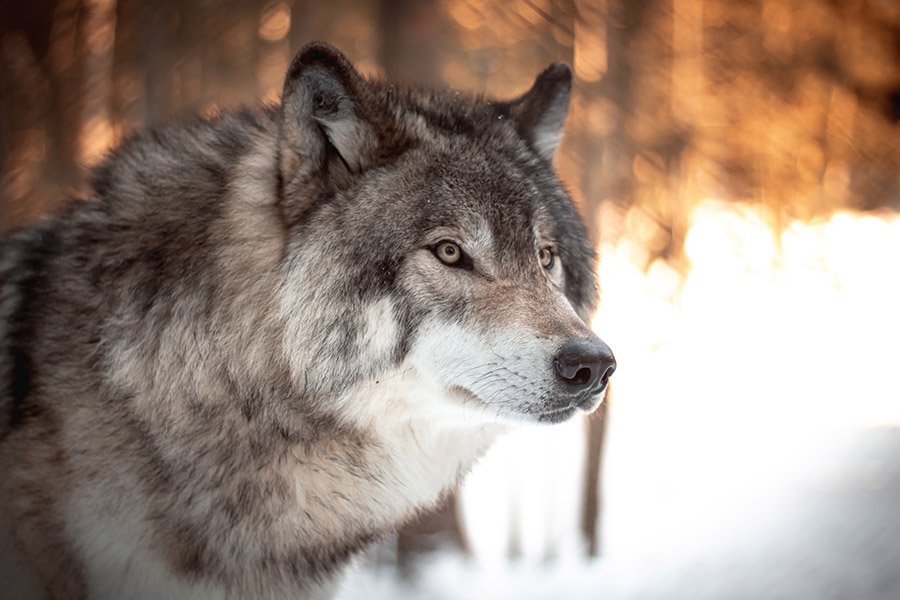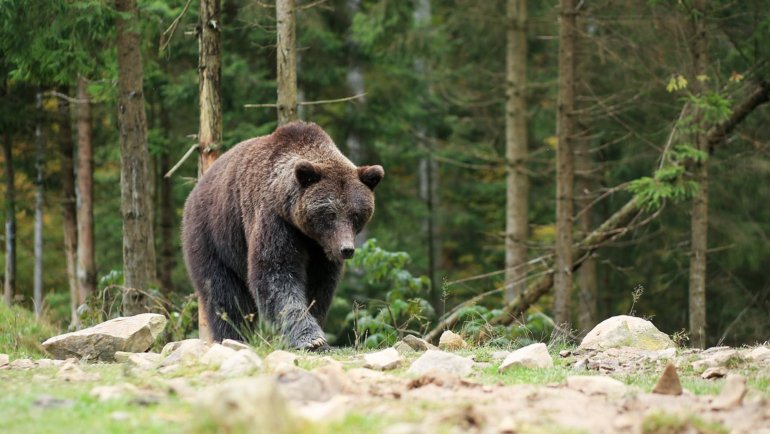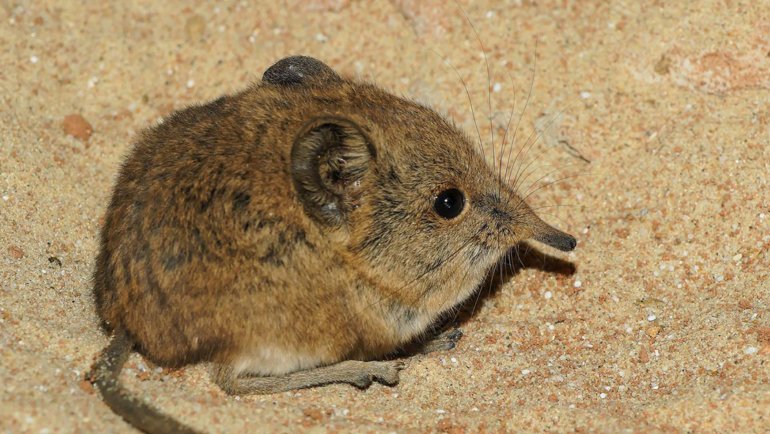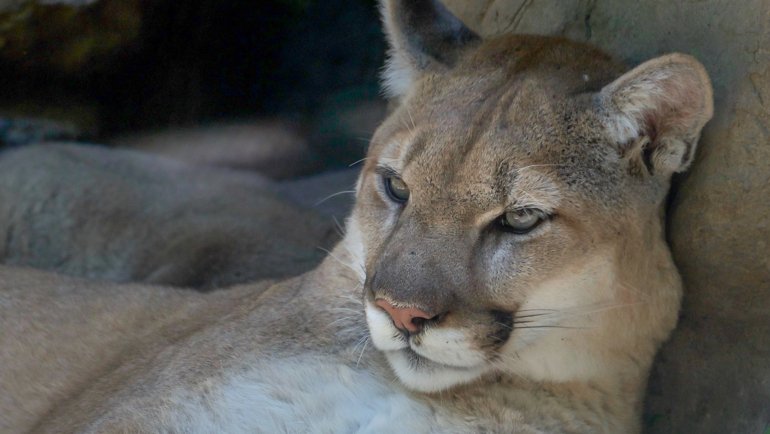Wolves, embodying the wild spirit of nature, have always played a pivotal role in North America’s ecosystems. In Tennessee, their historical presence has significantly shaped the natural landscapes we see today.
These apex predators were once keystones in maintaining the balance of various ecosystems, regulating prey populations and encouraging biodiversity.
Intriguingly, Tennessee is part of the historical range not just of the well-known Gray Wolf, but also of the elusive Red Wolf, a species whose struggle for survival echoes the broader environmental challenges we face.
Are There Wolves in Tennessee?
Currently, wild wolves do not roam the lands of Tennessee. Both the Gray Wolf and the Red Wolf, which once thrived here, have been extirpated from the state. The Gray Wolf once occupied regions across Tennessee, and the Red Wolf, native to the southeastern United States, also called Tennessee’s forests and wetlands home.
While there are no free-ranging wolves in Tennessee today, efforts to protect and potentially reintroduce these species in the wider region highlight a commitment to their preservation, but Tennessee has yet to see the return of these wild canines to its landscapes.

History of The Presence of Wolves in Tennessee
The rich diversity of Tennessee’s natural history is colored by the presence of two wolf species: the Gray Wolf and the Red Wolf. These predators played a critical role in the ecosystems throughout the state before the pressures of development and habitat loss took their toll.
The Gray Wolf was systematically removed from Tennessee through hunting and habitat destruction as settlers expanded. Similarly, the Red Wolf was driven to the brink of extinction by the mid-20th century.
While there have been no recent efforts to reintroduce wolves to Tennessee specifically, conservation programs in nearby states give hope for the Red Wolf’s survival, and there is potential for natural recolonization by the Gray Wolf as populations recover in neighboring regions. These histories highlight the delicate balance between human activity and wildlife conservation.
What Wolf Species and Subspecies Were There in Tennessee?
Tennessee’s forests and rivers once served as the natural habitat for two species of wolves: the Gray Wolf (Canis lupus) and the Red Wolf (Canis rufus).
Gray Wolf (Canis lupus): Historically, the Gray Wolf roamed the wider region of North America, which likely included parts of Tennessee, particularly in areas that provided abundant prey and forest cover.
This species is known for its adaptability to different environments, social structure in packs, and a complex communication system involving vocalizations, body postures, and scents.
Known for their variable fur color, which can range from pure white to brown, gray, or black. These wolves play a crucial role in their ecosystems by managing prey populations and influencing the behavior of other animals through top-down ecological processes. They typically form packs with a complex social structure, often led by an alpha pair.
Red Wolf (Canis rufus): The Red Wolf is the species most intimately connected with Tennessee’s wild past. Smaller and more slender than the Gray Wolf, the Red Wolf was well-suited to the dense forests and wetlands of the southeastern United States.
With a coat that could range from light tan to reddish or even black, this species was a top predator in the ecosystems of Tennessee, impacting prey species and competing with other predators such as mountain lions and alligators before their decline.
Red Wolves are smaller than their Gray Wolf relatives, with a distinctive reddish cast to their fur, hence their name. They tend to form smaller packs or even pair bonds and have a more varied diet that can adapt to their southern habitats, including taking smaller mammals and occasionally insects or berries. They were key in controlling populations of smaller prey species and thus maintaining the ecological balance.
Both species were largely eliminated from Tennessee due to habitat loss and predator control efforts. While there are no longer any wild populations of these wolves in Tennessee, their historical presence significantly shaped the region’s ecosystems.

Where Did Wolves Live in Tennessee?
Historically, wolves in Tennessee occupied a wide range of habitats, from the dense forests and rolling hills to the wetlands and river valleys that define the state’s diverse geography. The Gray Wolf, adaptable to various environments, was widespread, while the Red Wolf preferred the southeastern United States’ forested regions.
Over time, the distribution of wolves in Tennessee changed drastically. With the arrival of European settlers and the subsequent development, deforestation, and agriculture expansion, wolf habitats were fragmented and diminished.
By the 20th century, habitat loss combined with extermination efforts led to the complete eradication of wolves from the state. Today, factors that continue to affect habitat availability and quality include urbanization, road construction, and agricultural practices, which maintain the barrier to the natural reestablishment of wolves in Tennessee.
Are Wolves Protected in Tennessee?
Wolves are federally protected under the Endangered Species Act (ESA), but since there are no wild populations in Tennessee, state-specific protections are largely moot.
The Red Wolf is listed as endangered, and the Gray Wolf was previously delisted but has since had protections reinstated in much of its range following legal challenges. However, these protections apply to areas with existing wolf populations.
In Tennessee, the role of state and federal agencies in wolf management is primarily educational and preparatory, focusing on the potential of future recolonization and the mitigation of human-wildlife conflicts.
Should wolves naturally return to Tennessee, agencies like the U.S. Fish and Wildlife Service (USFWS) and the Tennessee Wildlife Resources Agency (TWRA) would likely oversee their management, implementing measures to address livestock predation and promote coexistence.
Education and outreach efforts could include informing the public about wolf ecology, the importance of predators in the ecosystem, and how to live alongside these animals should they return to Tennessee’s wild spaces.

Ecological Impact and Importance of Wolves
Wolves play a critical role as apex predators in the ecosystems they inhabit. In general, their presence can lead to trophic cascades that benefit multiple species and the physical environment. For example, wolves regulate prey populations, which can reduce browsing pressure on vegetation, allowing for greater biodiversity.
Without wolves, some ecosystems in Tennessee may have experienced an overpopulation of herbivores, potentially leading to overgrazing and a decrease in plant diversity.
In Tennessee, the absence of wolves means that these natural regulatory processes are not in place. This can lead to an imbalance in prey populations, such as deer, which may have consequences for plant communities and the overall health of forests and grasslands.
Furthermore, the lack of competition from wolves can alter the behavior and population dynamics of other predators, such as coyotes, potentially leading to an increase in their numbers and an associated impact on smaller prey species.
Where to Observe Wolves in Tennessee and Around
Since there are no wild wolf populations in Tennessee, observing them in their natural habitat is not possible. However, for those interested in seeing wolves, there are facilities where wolves are kept in captivity for educational and conservation purposes.
Here are some places where wolves can be observed in captivity in Tennessee or nearby states:
- Reflection Riding Arboretum & Nature Center in Chattanooga, Tennessee, has Red Wolves as part of their wildlife exhibits, as a member of the Red Wolf Species Survival Plan (RWSSP).
- Bays Mountain Park & Planetarium in Kingsport, Tennessee, offers the chance to see a pack of Gray Wolves. They provide educational programs that allow visitors to learn about wolf behavior and conservation.
- The WNC Nature Center in Asheville, North Carolina, not far from the Tennessee border, houses Red Wolves as part of the RWSSP breeding program aimed at preserving this critically endangered species.
When observing wolves in captivity, it’s important to:
- Respect the animals’ space and avoid causing them stress.
- Follow all rules and guidelines provided by the facility.
- Never feed or attempt to touch the wolves.
- Use quiet voices and move slowly to keep the wolves calm.
Ecotourism plays a significant role in conservation efforts by raising awareness and funding for wildlife preservation. When visiting facilities that house wolves, your entrance fees and donations can directly support conservation programs and research dedicated to understanding and protecting these magnificent animals.
What Other Major Predators Can Be Found in Tennessee?
- American Black Bear (Ursus americanus): The Great Smoky Mountains National Park in eastern Tennessee is a stronghold for the American Black Bear. These omnivores have a diet that ranges from berries and nuts to carrion and, occasionally, young ungulates.
- Coyote (Canis latrans): The Coyote is now the most widespread large predator in Tennessee. Adaptable and resilient, they occupy a niche similar to that of wolves, controlling populations of small to medium-sized mammals and occasionally preying on deer.
- Bobcat (Lynx rufus): Bobcats are stealthy predators found throughout Tennessee. They typically hunt rabbits, rodents, and birds and are solitary except during the breeding season.
- Red-tailed Hawk (Buteo jamaicensis): This bird of prey is common throughout the state, feeding on small mammals, birds, and reptiles. As a diurnal raptor, it plays a critical role in the daytime hunting niche.
The ecological relationships between these predators and wolves are complex and often involve competition for resources. Wolves, if present, would likely impact the behavior and population dynamics of these species, particularly coyotes, with whom they compete directly.
The Future of Wolves in Tennessee
Currently, there are no known wild wolves in Tennessee, and there are no ongoing conservation efforts aimed at their reintroduction. The main challenges and threats that would face wolf populations if they were to return include habitat loss, human-wildlife conflicts, and roadway mortalities.
The future outlook for wolves in Tennessee is uncertain, but with effective conservation measures and public education, it’s possible that wolves could once again play a role in the state’s ecosystems, particularly if there is a concerted effort to connect habitat corridors and ensure legal protections.
Frequently Asked Questions
Are there any wolves in Tennessee?
No, there are currently no established populations of wild wolves in Tennessee.
Can I see wolves in the wild in Tennessee?
Wolves are not present in the wild in Tennessee, so seeing them in their natural habitat within the state is not possible.
What happened to the wolves in Tennessee?
Wolves in Tennessee were eradicated due to habitat destruction and extermination campaigns during the settlement and development periods.
Is it legal to own a wolf or wolf-dog hybrid in Tennessee?
Tennessee law restricts the ownership of “inherently dangerous” animals, including hybrids. Permits are required, and there are specific regulations in place for keeping these animals.
Could wolves ever return to Tennessee?
While unlikely in the near future, natural recolonization or future reintroduction efforts could potentially see the return of wolves to Tennessee if the appropriate habitat and public support exist.
Status of Wolves in Other US States
- Alabama
- Alaska
- Arizona
- Arkansas
- California
- Colorado
- Connecticut
- Delaware
- Florida
- Georgia
- Hawaii
- Idaho
- Illinois
- Indiana
- Iowa
- Kansas
- Kentucky
- Louisiana
- Maine
- Maryland
- Massachusetts
- Michigan
- Minnesota
- Mississippi
- Missouri
- Montana
- Nebraska
- Nevada
- New Hampshire
- New Jersey
- New Mexico
- New York
- North Carolina
- North Dakota
- Ohio
- Oklahoma
- Oregon
- Pennsylvania
- Rhode Island
- South Carolina
- South Dakota
- Tennessee
- Texas
- Utah
- Vermont
- Virginia
- Washington
- West Virginia
- Wisconsin
- Wyoming





